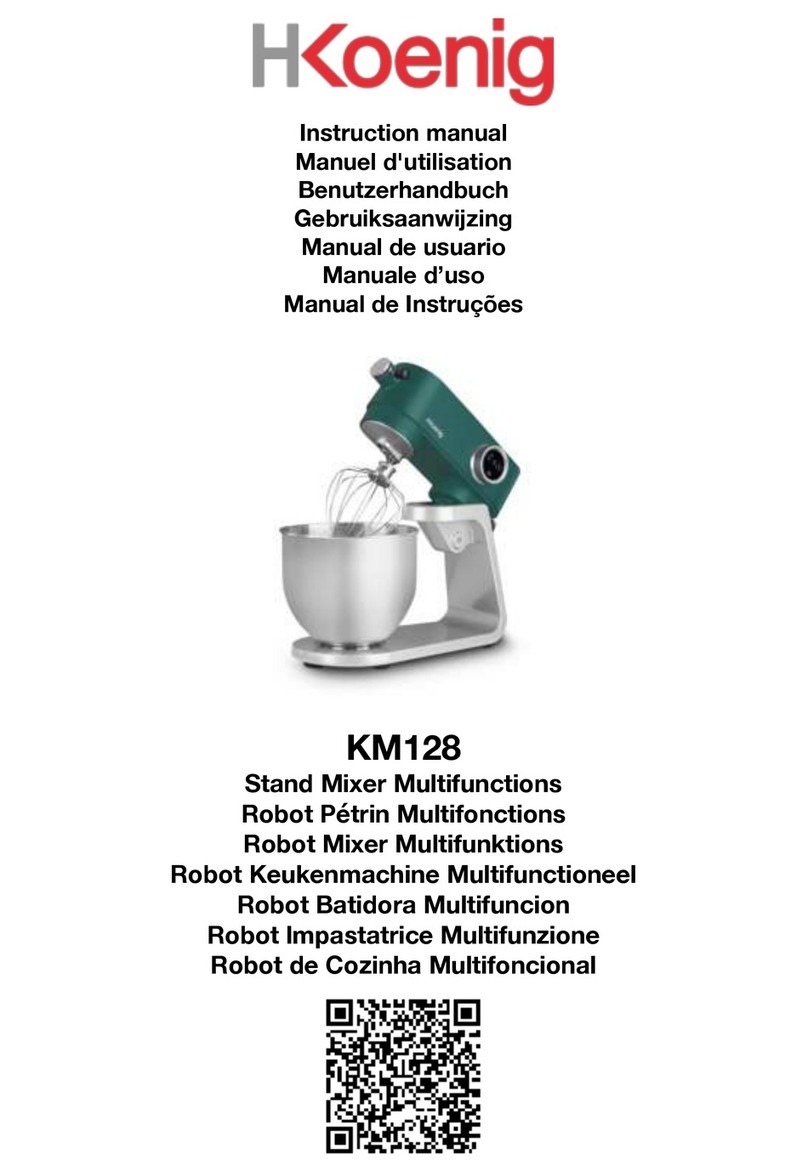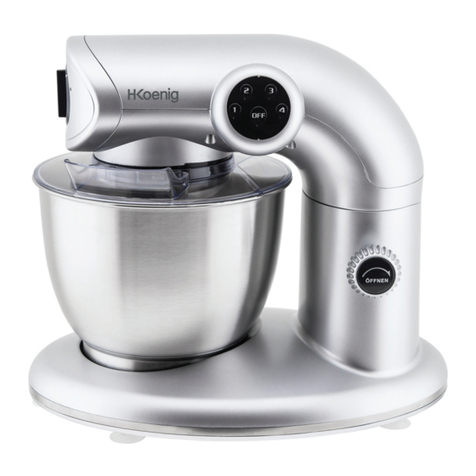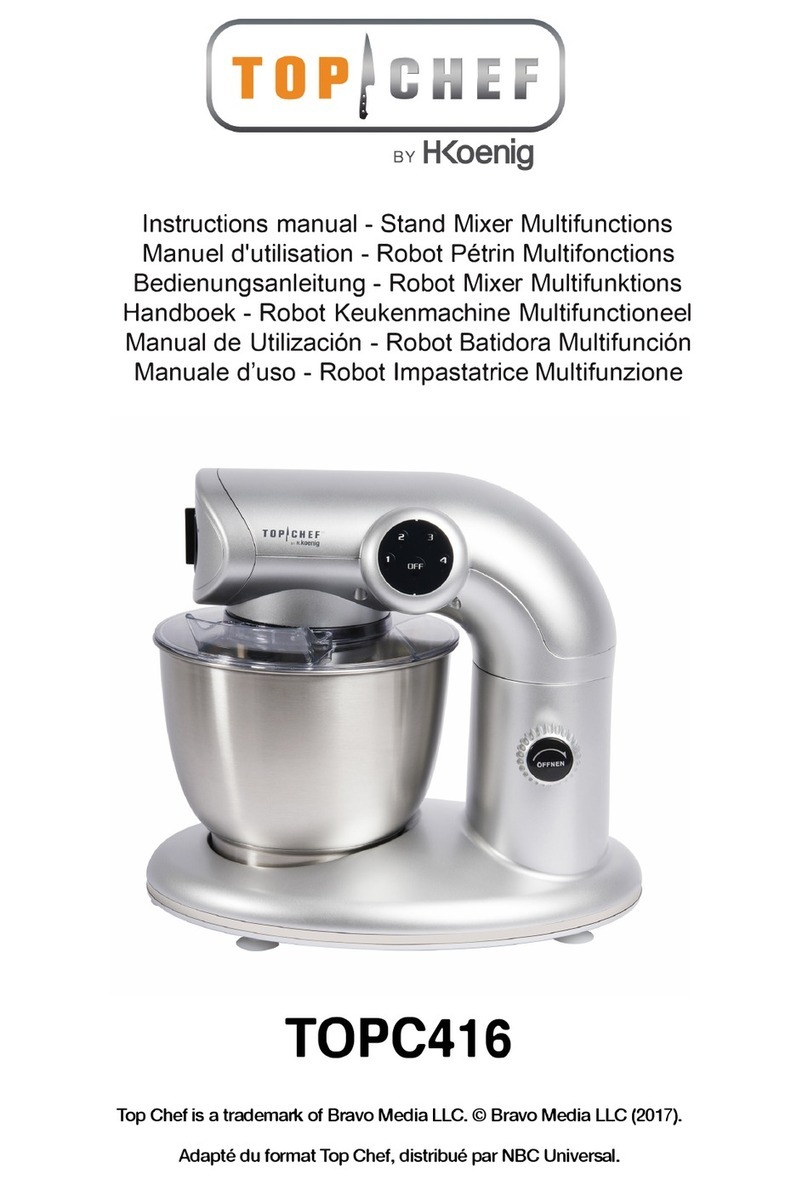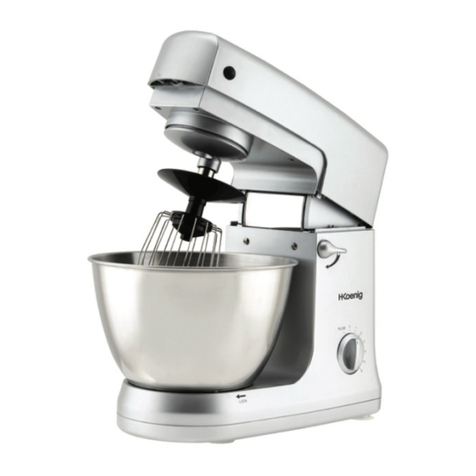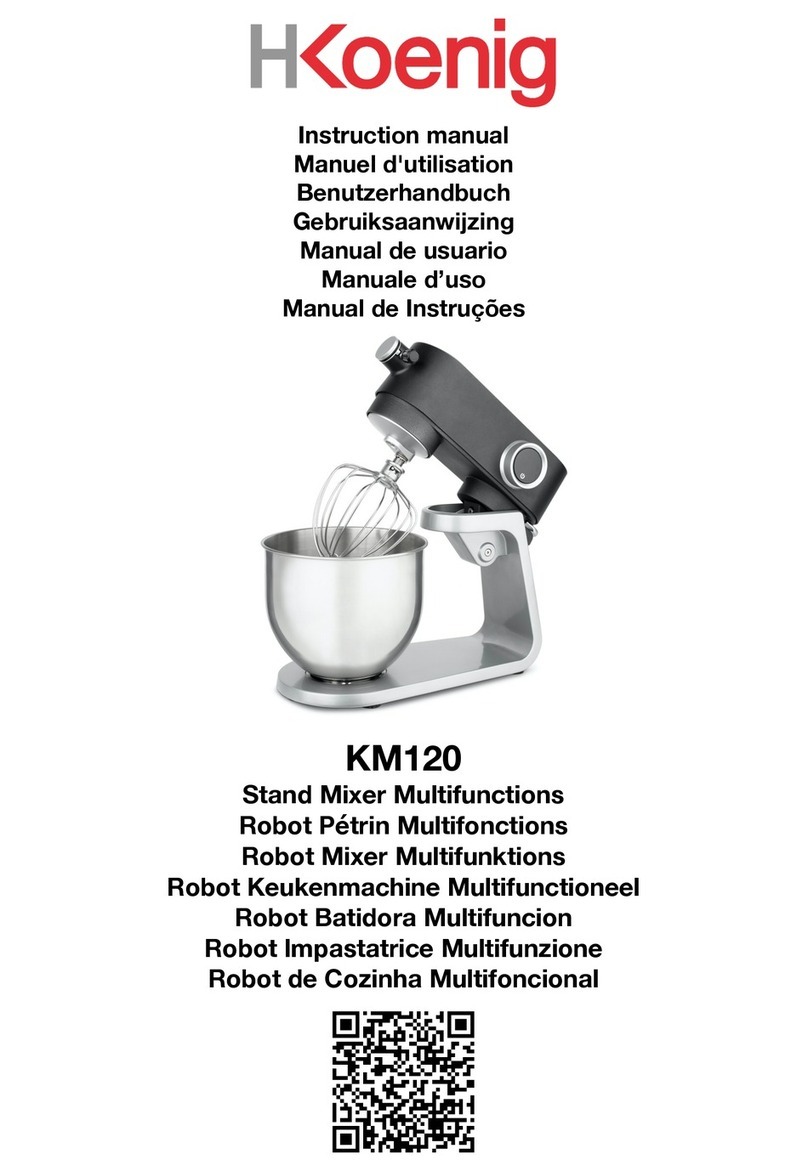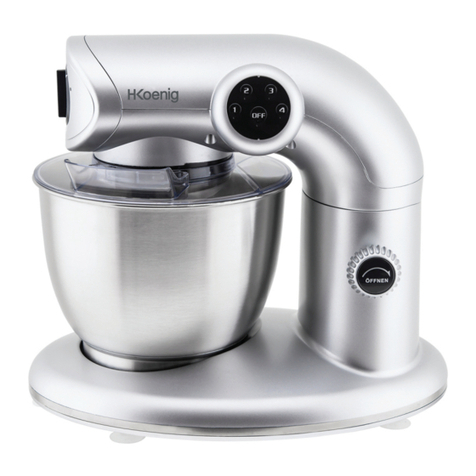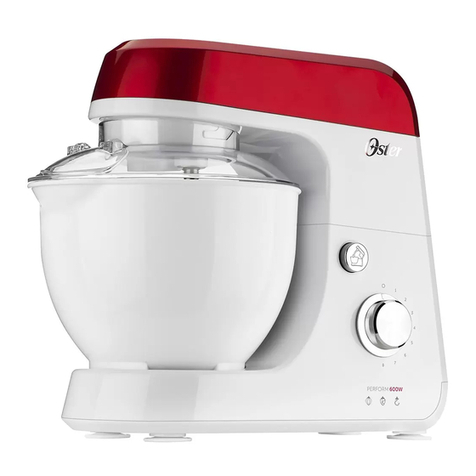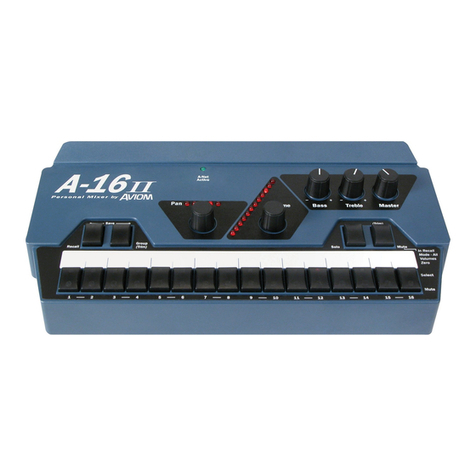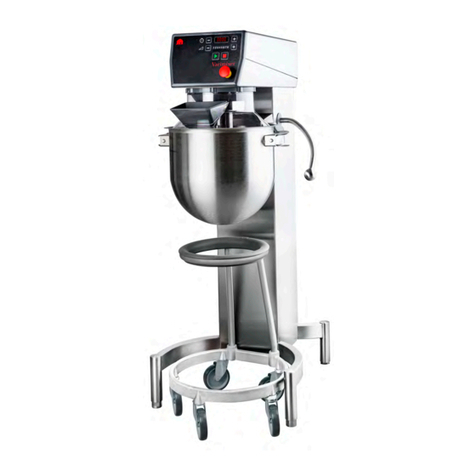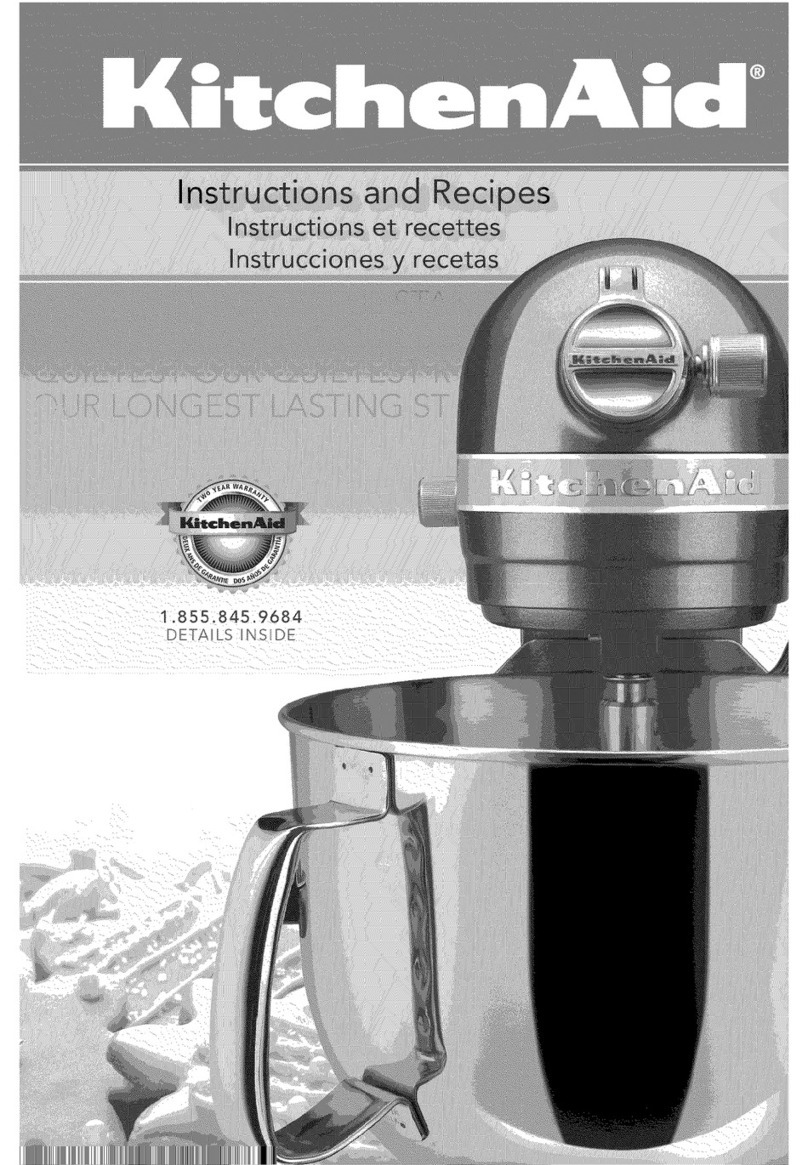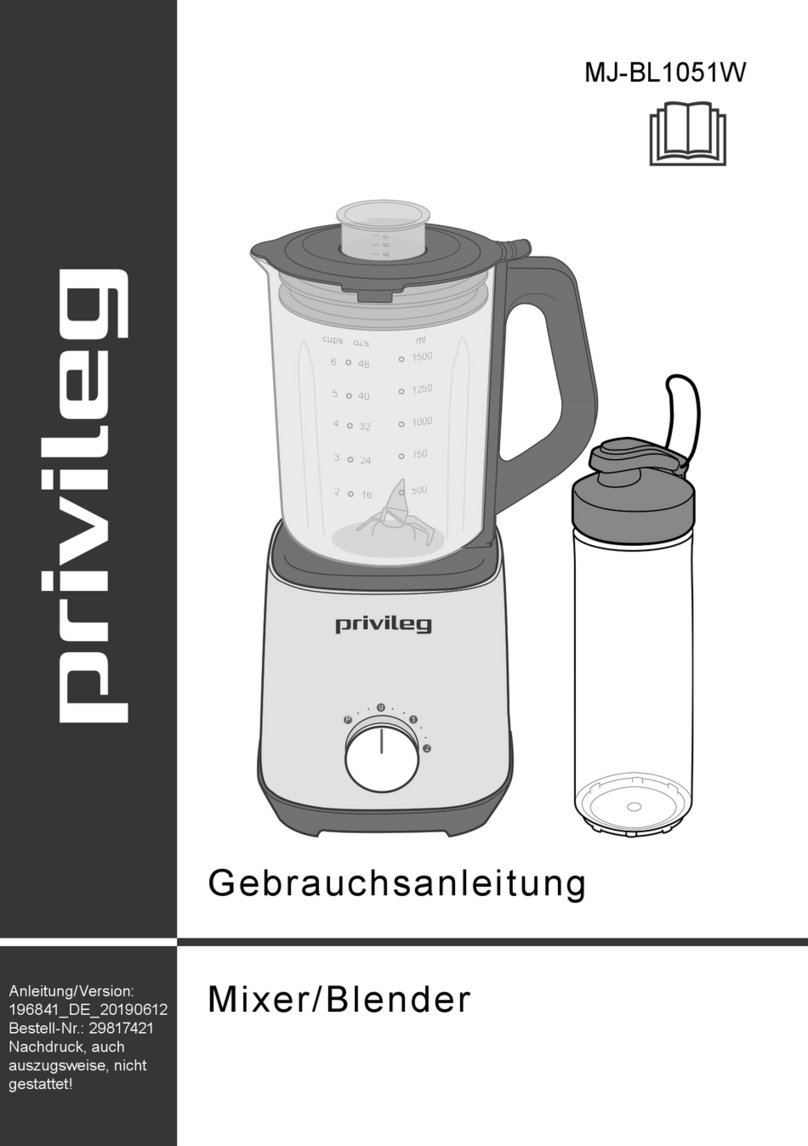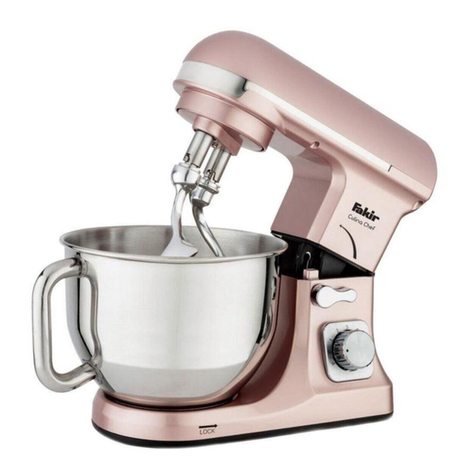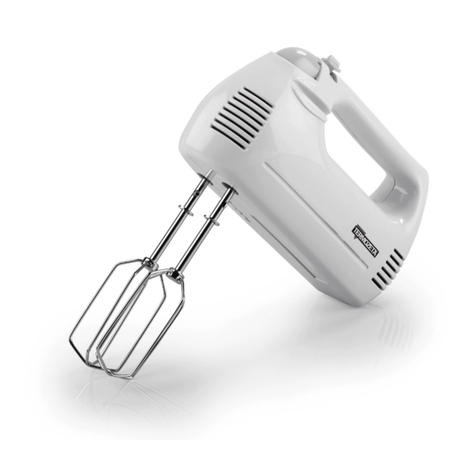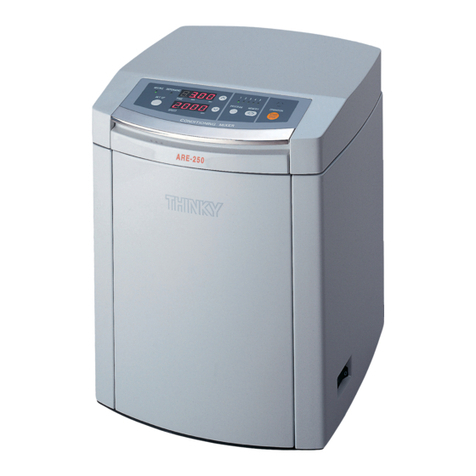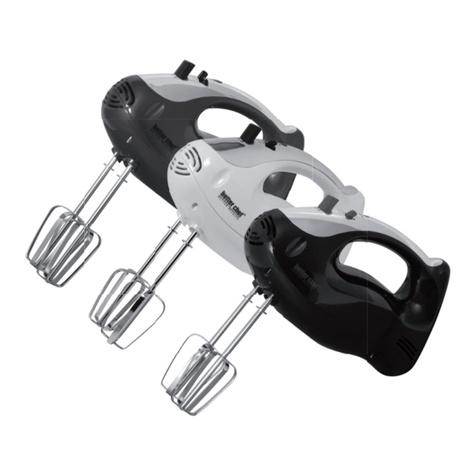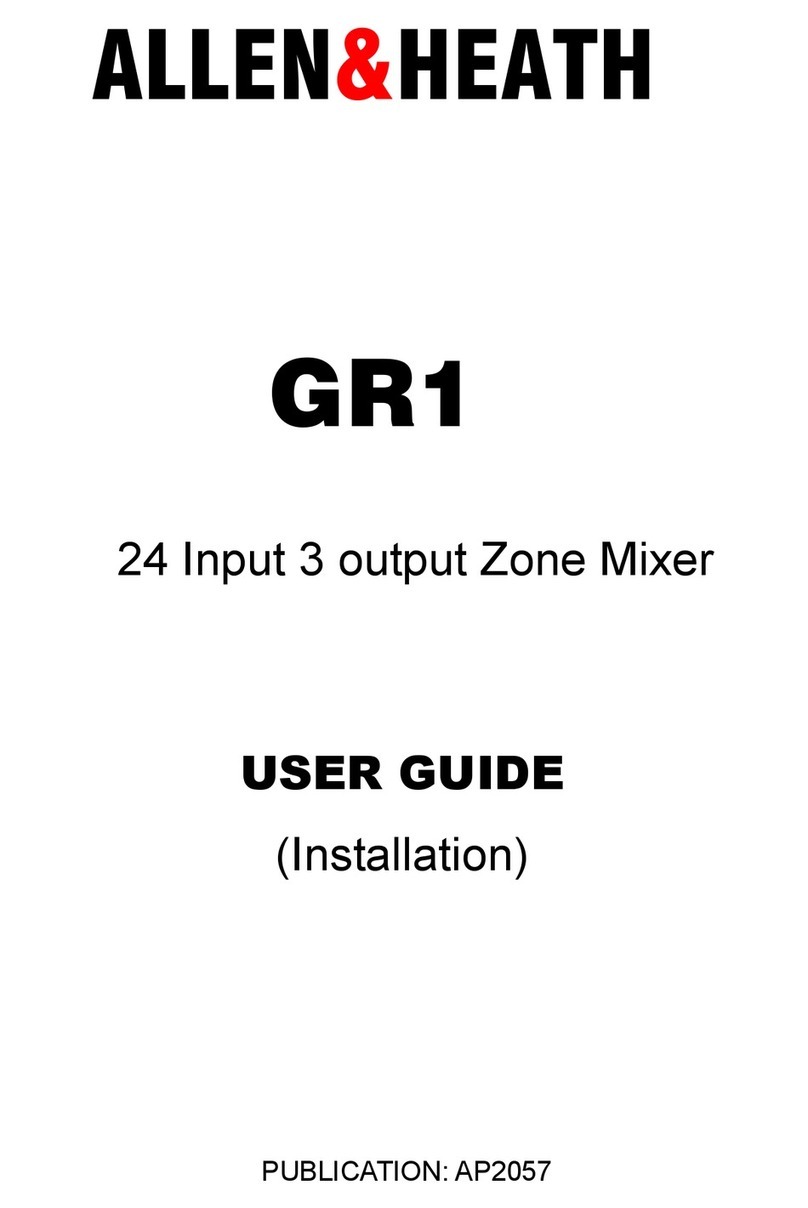
FRANCAIS
Données techniques
Modèle : KM65
Tension nominale : 220-240V, 50/60Hz
Puissance maximale : 1000W
Classe de protection : II
Afin de prolonger la durée de vie de l’appareil, nous vous conseillons des utilisations par tranches de : 10 min maxi
Cet appareil a été testé selon toutes les directives CE actuelles applicables, comme les directives de compatibilité
électromagnétiques et les directives basses tensions, et a été construit en conformité avec les dernières législations
de sécurité en date.
Sujet à changements techniques sans préavis !
Instructions générales de sécurité
Lisez ce manuel d'instructions avec attention avant d'utiliser l'appareil, et conservez ces instructions, y compris la
garantie, le reçu et, si possible, la boîte avec l'emballage intérieur. Si vous donnez l'appareil à quelqu'un d'autre,
transmettez aussi les instructions d'utilisation.
L'appareil est conçu exclusivement pour un usage privé et pour le but envisagé. Cet appareil ne convient pas à
un usage commercial. Ne l'utilisez pas à l'extérieur (sauf s'il est conçu pour ça). Tenez-le loin des sources de
chaleur, de l'éclairage direct du soleil, de l'humidité (ne le plongez jamais dans un liquide) et des angles aigus.
N'utilisez pas l'appareil avec les mains mouillées. Si l'appareil est humide ou mouillé, débranchez-le
immédiatement.
Quand vous le nettoyez ou le rangez durablement, éteignez l'appareil et débranchez-le (tirez sur la prise, pas
sur le cordon) si l'appareil ne doit pas être utilisé et enlevez les accessoires qui lui sont rattachés.
Ne faites pas fonctionner l'appareil sans surveillance. Si vous devez quitter l'espace de travail, éteignez
toujours la machine ou débranchez-le (tirez sur la prise, pas sur le cordon).
Vérifiez régulièrement que l'appareil et le câble ne sont pas endommagés. N'utilisez pas l'appareil s'il est
endommagé.
N'essayez pas de réparer l'appareil vous-même. Contactez toujours un technicien habilité. Pour éviter de vous
exposer à un éventuel danger, ne faites remplacer un câble endommagé que par le fabricant, par notre service
après-vente ou par une personne qualifiée, et avec un câble du même type.
Si le cordon d'alimentation est endommagé, il doit être remplacé auprès d'un Service après-vente afin d'éviter
tout danger.
N'utilisez que des pièces de rechange d'origine.
Faites particulièrement attention aux "Instructions spéciales de sécurité" qui suivent.
Enfants et personnes vulnérables
Pour garantir la sécurité de vos enfants, conservez tous les emballages (sacs en plastique, boîtes, polystyrène,
etc.) hors d'atteinte.
Attention ! Ne laissez pas les jeunes enfants jouer avec le sac : il y a un risque de suffocation !
Cet appareil n’est pas prévu pour être utilisé par des personnes (y compris les enfants) dont les capacités
physiques, sensorielles ou mentales sont réduites, ou des personnes dénuées d’expérience ou de
connaissance, sauf si elles ont pu bénéficier, par l’intermédiaire d’une personne responsable de leur sécurité,
d’une surveillance ou d’instructions préalables concernant l’utilisation de l’appareil.
Il convient de surveiller les enfants pour s’assurer qu’ils ne jouent pas avec l’appareil.
N'utilisez cette machine que sous surveillance.
